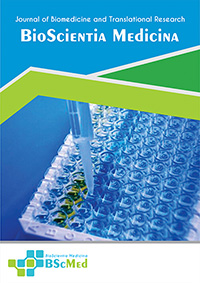Main Article Content
Abstract
Background: Hyperthyroidism exerts significant detrimental effects on the cardiovascular system, increasing the risk of major adverse cardiac events (MACE). While associations with atrial fibrillation and cardiomyopathy are well-documented, the incidence and characteristics of myocardial ischemia, particularly assessed by functional imaging, remain less explored. This study aimed to investigate the incidence of myocardial ischemia in hyperthyroid patients using Technetium-99m Sestamibi (⁹⁹ᵐTc-Sestamibi) myocardial perfusion scintigraphy (MPS) and correlate findings with thyroid hormone levels.
Methods: This prospective preliminary study enrolled fifteen consecutive patients with confirmed hyperthyroidism and no prior history of ischemic heart disease between January and April 2024. All subjects underwent thyroid function tests (TSH, fT4, T3) and a one-day rest/adenosine-stress ⁹⁹ᵐTc-Sestamibi MPS protocol. Myocardial ischemia presence, reversibility, severity (Summed Stress Score, SSS), and extent (total ischemic segments) were assessed using the AHA 17-segment model. Spearman correlation was used to analyze the relationship between hormone levels and MPS parameters.
Results: Fifteen subjects (93.3% female, mean age 34 ± 11 years) were included. Myocardial ischemia was detected in 14/15 subjects (93.3%). Among those with ischemia, 12 (80% of total subjects, 85.7% of ischemic subjects) exhibited reversible defects. Free thyroxine (fT4) levels showed a strong positive correlation with SSS (rs = 0.64, p = 0.01) and the total number of ischemic segments (rs = 0.65, p = 0.01).
Conclusion: This preliminary study revealed a high incidence of myocardial ischemia, predominantly reversible, in patients with hyperthyroidism detected by ⁹⁹ᵐTc-Sestamibi MPS. The severity and extent of ischemia demonstrated a significant positive correlation with fT4 levels. These findings underscore the potential utility of MPS in cardiovascular risk assessment and suggest the need for comprehensive cardiac evaluation in hyperthyroid patients, particularly those with higher fT4 levels.
Keywords
Article Details
As our aim is to disseminate original research article, hence the publishing right is a necessary one. The publishing right is needed in order to reach the agreement between the author and publisher. As the journal is fully open access, the authors will sign an exclusive license agreement.
The authors have the right to:
- Share their article in the same ways permitted to third parties under the relevant user license.
- Retain copyright, patent, trademark and other intellectual property rights including research data.
- Proper attribution and credit for the published work.
For the open access article, the publisher is granted to the following right.
- The non-exclusive right to publish the article and grant right to others.
- For the published article, the publisher applied for the Creative Commons Attribution-NonCommercial-ShareAlike 4.0 International License.





